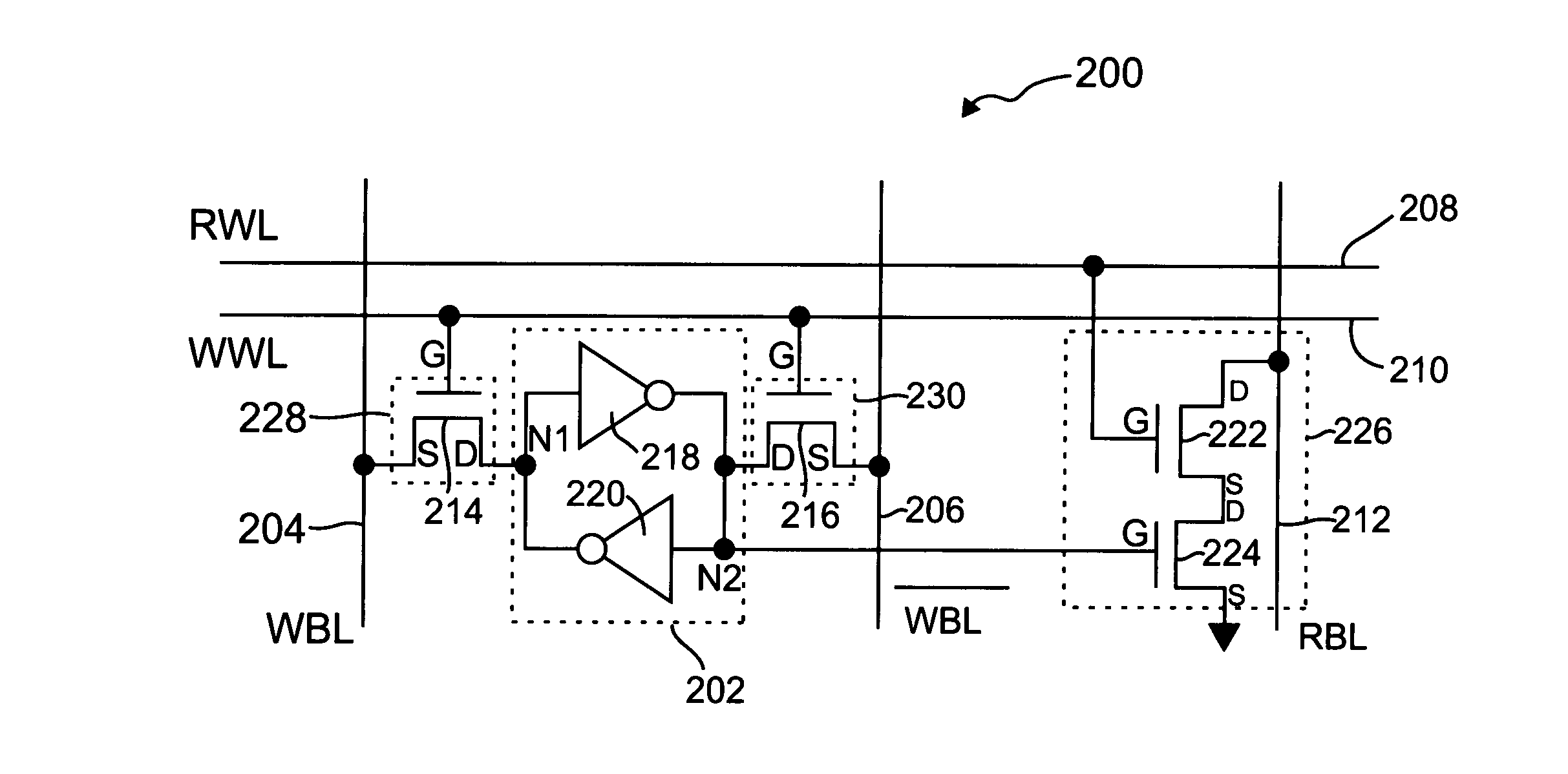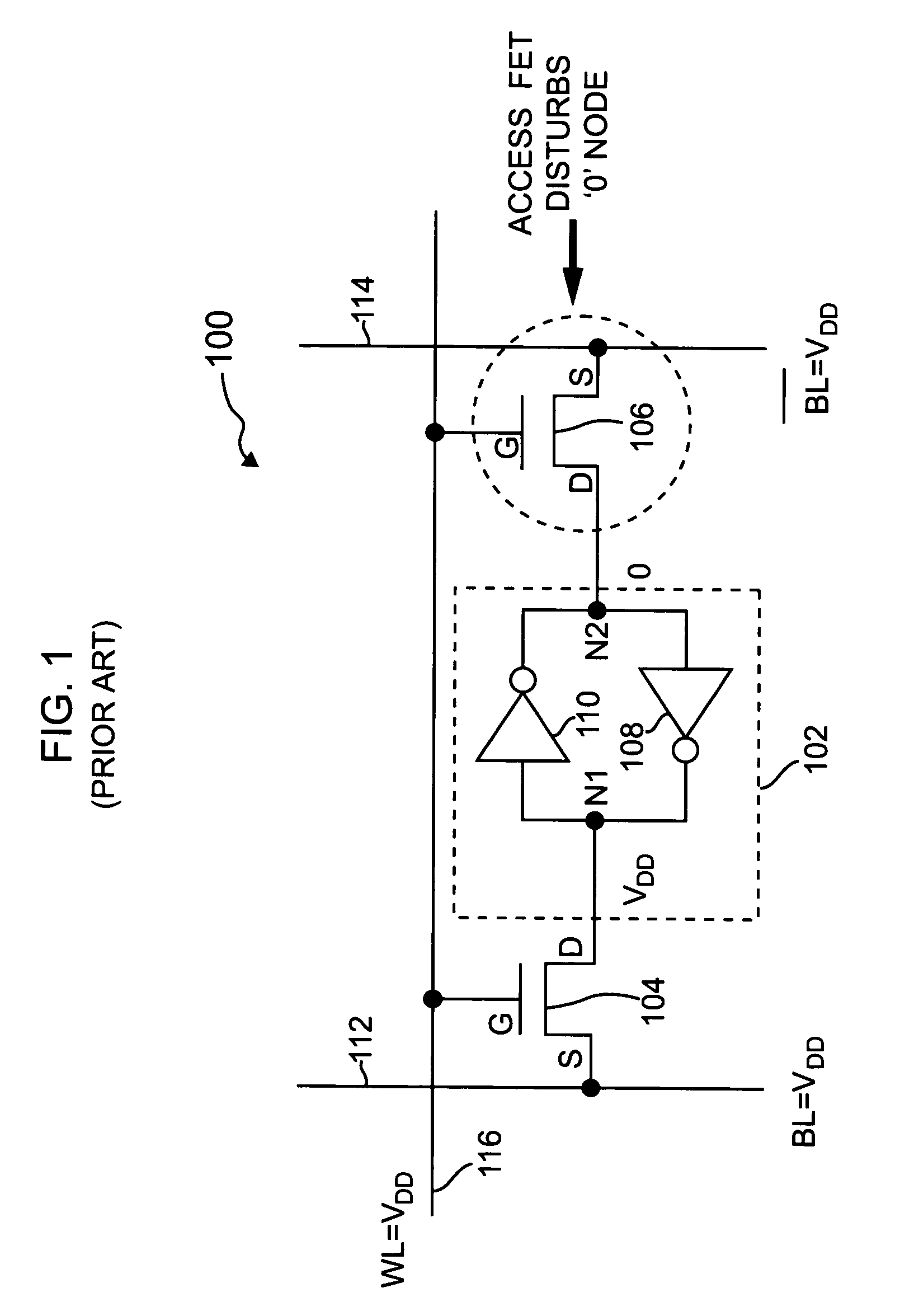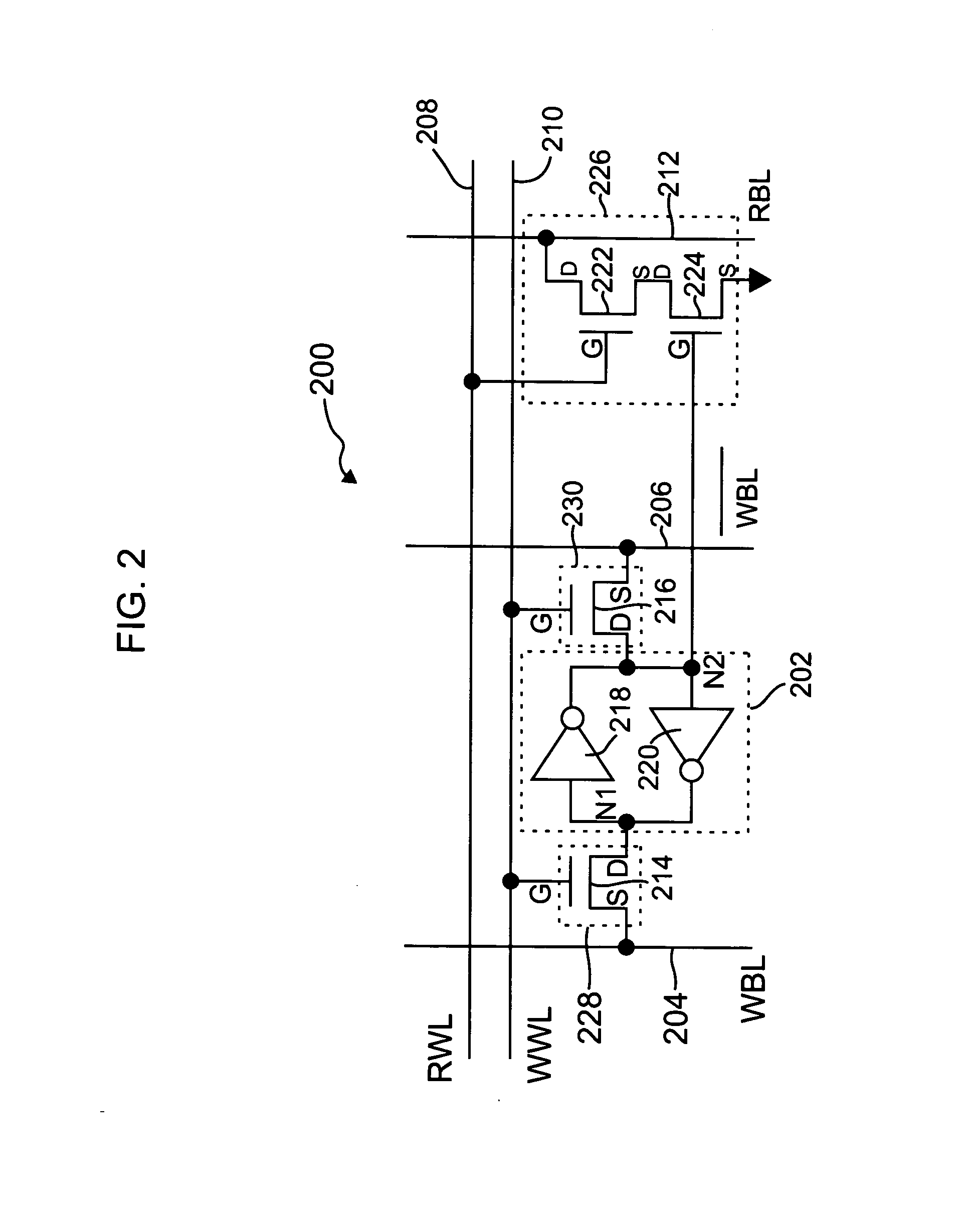Memory cell having improved read stability
a memory cell and read stability technology, applied in the field of memory devices, can solve the problems of general stability problems, inability to scale with overall technology advancements, and disturbance of voltages on internal nodes of memory cells, and achieve the effect of improving the architecture of memory cells and virtually eliminating disturbances of memory cells
- Summary
- Abstract
- Description
- Claims
- Application Information
AI Technical Summary
Benefits of technology
Problems solved by technology
Method used
Image
Examples
Embodiment Construction
[0021]The present invention will be described herein in the context of an illustrative static memory cell suitable for use, for example, in an SRAM array. It should be appreciated, however, that the invention is not limited to this or any particular memory cell architecture. Rather, the invention is more generally applicable to techniques for advantageously eliminating disturbs in a memory cell, thereby improving a stability of the memory cell, during a read operation. The memory cell of the present invention may be easily fabricated using standard integrated circuit (IC) process technology, such as, for example, a complementary metal-oxide-semiconductor (CMOS) fabrication process. Consequently, the cost of manufacturing the memory cell is not significantly increased compared to standard static memory cells.
[0022]FIG. 1 is a schematic diagram illustrating a standard 6-T memory cell 100. The memory cell 100 includes a static storage element 102 that is selectively connectable to bit ...
PUM
 Login to View More
Login to View More Abstract
Description
Claims
Application Information
 Login to View More
Login to View More - R&D
- Intellectual Property
- Life Sciences
- Materials
- Tech Scout
- Unparalleled Data Quality
- Higher Quality Content
- 60% Fewer Hallucinations
Browse by: Latest US Patents, China's latest patents, Technical Efficacy Thesaurus, Application Domain, Technology Topic, Popular Technical Reports.
© 2025 PatSnap. All rights reserved.Legal|Privacy policy|Modern Slavery Act Transparency Statement|Sitemap|About US| Contact US: help@patsnap.com



